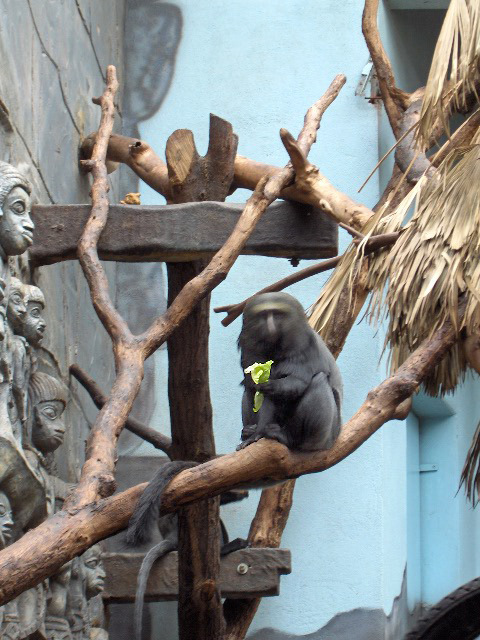Facts About Hamlyn's (Owl-faced) Monkey
The Hamlyn's monkey, also known as the owl-faced monkey, is a rare and captivating species of Old World monkey that inhabits the bamboo and primary rainforests of the Congo. Due to its elusive nature, much about this monkey remains shrouded in mystery, with only a limited number of documented sightings. These monkeys are predominantly found in the eastern Congo, spanning from the Epulu River to the Lukuga River and from the Congo River to the Kabale Forest. There has even been a sighting in northwestern Rwanda. Their range somewhat overlaps with that of L'Hoest's monkey.
Hamlyn's monkeys are believed to be primarily nocturnal and prefer traveling on the ground rather than through the trees. Their classification has been a topic of historical debate. In 1928, Schwarz grouped them with C. l'hoesti, while in 1913, Elliot emphasized their distinct dental features and suggested they belong in a separate genus, Rhinostigma.
In terms of size, males are generally larger than females. Males typically weigh between 7 to 10 kg, whereas females weigh between 4.5 to 6 kg. Their diet is thought to consist mainly of fruits and leaves, classifying them as frugivore-folivores. They are often found in small social groups consisting of one male and several females, usually at higher elevations between 900 meters and 4,600 meters.
Visually, these monkeys are dark gray with a distinctive white stripe running from their nose to their upper lip, giving them an owl-like appearance. This unique look is why they are sometimes called owl-faced monkeys. The species is named after the dealer who introduced them to the London Zoo. They have scent glands on their chest used for marking their territory and are known for their striking blue buttocks. Adult males also have bright red and blue genitals, while juveniles sport yellow-brown fur and pink faces. In captivity, Hamlyn's monkeys can live up to 33 years.
Similar to other monkeys in their genus, Hamlyn's monkeys cover large areas in search of food, showcasing their adaptability and endurance in the wild.

 Uganda
Uganda